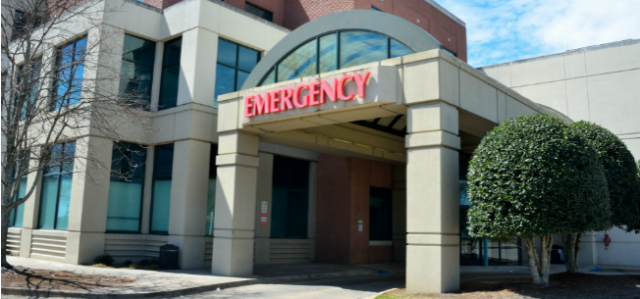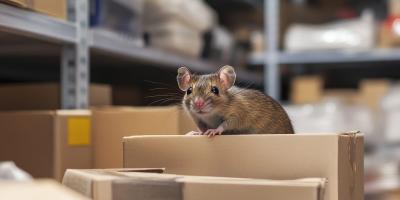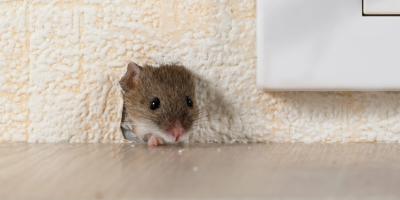5 Steps To Keep Insects Out Of Your Healthcare Facility

Patients, families, and visitors to your healthcare facility likely have a lot on their minds from the moment they walk through your doors - and the last thing they need to worry about is a pest problem staring them in the face in the very space where they’ve come to find help.
That’s why it’s critical for healthcare facilities to remain as free from pest problems as possible. However, with the heavy traffic and frequent changeover seen in most healthcare facilities, keeping those most common pests away can be difficult even for experienced administrators.
With these simple pest prevention strategies, you can ensure your healthcare facility remains unattractive to pests and responsive to any issues as before they begin to bother your customers.
1. Identify Key Entry Points For Pests
Most likely, pests are not relying on dozens of different entry points to get inside your healthcare facility. More likely, they’re utilizing just a few undetected entry points to gain access inside - meaning taking time to identify and block off these key entry points could be one of the simplest and most effective methods of keeping pests out of your healthcare facility and away from your patients.
In some cases, these entry points may be immediately apparent - a door that does not shut properly, a window with a torn screen, a hole in the ceiling, or some other small but accessible entry point. In other cases, a facility operator may require the assistance of a pest professional with healthcare facility experience, who can help identify these main entry points and suggest effective ways to block future pests from finding their way inside.
2. Know Which Problematic Pests To Watch out For
Although no two pest problems will every be identical, many follow the same general pattern - and involve the same common pests.
For healthcare facilities, the variety and particular species of pests you may encounter will likely vary from location to location, but healthcare facility managers worldwide should generally anticipate the same common pests:
- Cockroaches
- Bed Bugs
- Ants
- Rodents
- Flies
- Stinging Pests
- Birds
- Wildlife
- Mold & Surface Contaminants
Each of these common healthcare pests will bring with it a unique set of challenges, best solutions, and methods for making sure your patients, staff, and visitors are not affected. An experienced pest management professional can help safely and effectively remove and prevent these pests from your facility.
3. Communicate Effectively To Secure Patient Safety
It is no secret that even a single report of a pest problem in your healthcare facility can do damage to your reputation as a safe haven for patients and their families - but even worse than admitting to a pest problem is trying to keep one secret, only to have the truth revealed by a patient who spots a pest.
That’s why clear, consistent communication with your patients, visitors, and staff is necessary for keeping pest problems closely controlled and eventually resolved without letting them ruin your facility’s standing in the community. That means hearing and responding to customer complaints, being forthcoming about treatment procedures, and sharing your facility’s ongoing pest control tactics moving forward.
Your pest management expert can help craft this communication strategy to achieve the best results for your particular pest problems.
4. Ensure Staff Is Properly Trained To Minimize Pest Problems
While it is always recommended that patients should be kept top-of-mind when dealing with any pest prevention strategy - making sure patients are not bringing pests with them when they enter, and keeping pests and patients far apart - it’s also important to remember that your staff is really your first line of defense on identifying and managing pest infestations in your healthcare facility.
Your staff should be fully and regularly trained on simple pest prevention strategies, including everything from how to identify common pests and what to do if a pest is spotted in your facility. By getting all of your staff on board with your pest management methods, you drastically increase your chances of keeping your healthcare facility pest-free moving forward.
5. Carefully Record and Monitor All Pest Problems
The key to eliminating an active pest problem may be fast action and smart strategies, but the key to long-term pest management truly lies in keeping detailed, accurate records of your existing pest management strategies to identify what has worked, what has not, and where your pest prevention can improve moving forward.
Your pest management professional can help you not only create a manageable action plan for pest prevention, but also a reliable way of keeping track of your pest prevention efforts. That way, you can know for sure which strategies have effectively kept which pests out of your facility, and where weak points in your pest prevention efforts may still exist.
In most cases, these records are also necessary for proper certification and sanitation standards, but it is still a good idea to keep your records as clear and complete as possible to ensure no pests remain undetected.
Keep Your Facility Pest-Free For Your Patients
Healthcare facilities present a wide variety of unique challenges in regards to pest prevention, as sanitation standards and patient contact are ever-present realities for healthcare administrators all around the world. Only with a smart, actionable strategy and strict attention to detail will most healthcare facilities be able to keep pests under control and out of the way.
Get in touch with a pest management professional today and get your facility on the path to pest-free operation - your patients will be so much happier you did.



